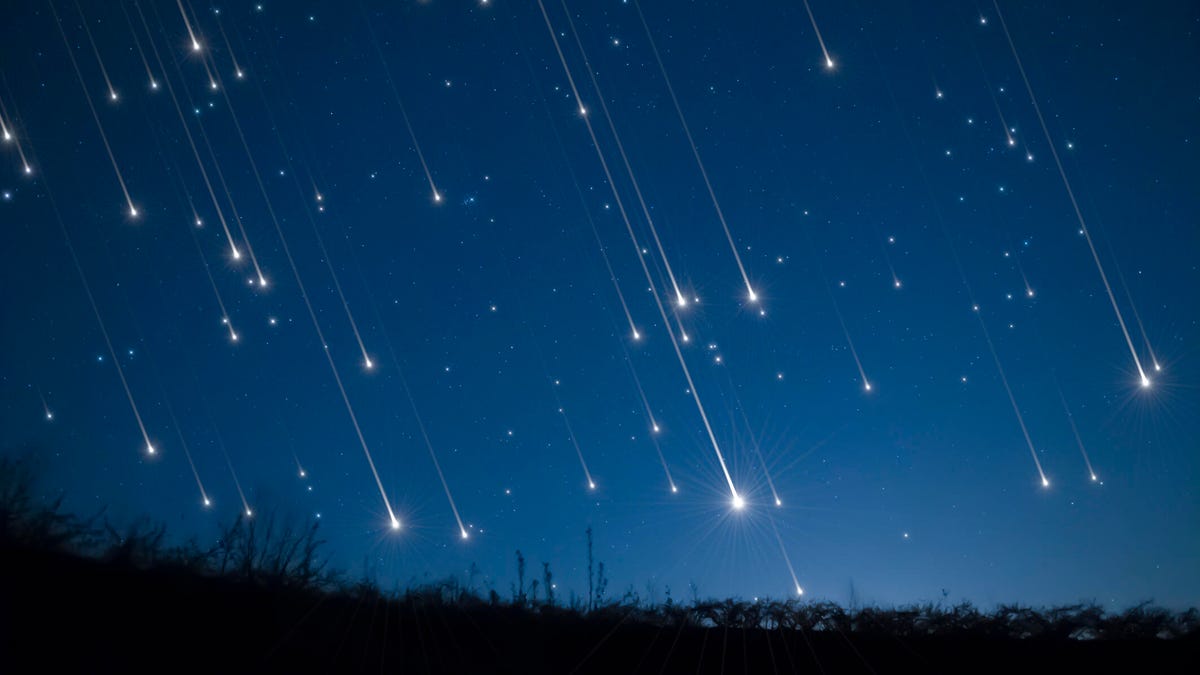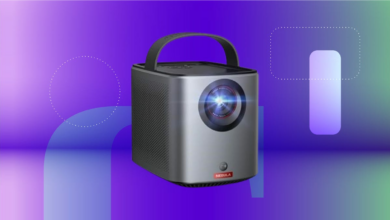It’s not too late to see a meteor shower: here’s what’s left in 2024

Between the multiple aurora borealis, total solar eclipse and planet parades, there was no shortage of sky-watching spectacles. In August, there was the Perseid meteor shower, an annual event for sky-watchers around the world. If you’re still hoping to see a shooting star, you’ll have plenty of opportunities in 2024.
There are nine named meteor showers left in 2024, with at least one meteor shower that is always active. That means you have a chance to see a shooting star on any given night between now and the end of the year. Since most meteor showers last for weeks, they overlap, giving you a better chance on some days.
The list includes the Geminids and Quadrantids meteor showers. These are two of the largest meteor showers of the year, with the Geminids producing over 150 meteors per hour and the Quadrantids up to 120 per hour. Despite these showers occurring during the colder months, those who wrap up warm and get outside will be rewarded for their efforts.
There are also several smaller meteor showers such as Kappa Cygnids and Alpha Aurigids where the display won’t be as great, but they happen so consistently that you can see a meteor outside at any time. We’ll be going through all the meteor showers, big and small, for the rest of 2024.
How to watch a meteor shower
Meteor shower watching requires a bit of work. Generally, when astronomers calculate the number of meteors you will see per hour, they do so under the assumption that you are far away from a major city with no visible moon. Since the moon is almost always at least partially full, this means that you are unlikely to see the maximum number of meteors per hour.
Go outside where the sky is as dark as possible. People who live in big cities may see some during the larger meteor showers like the Geminids and Quadrantids, but during the smaller showers even people who live in the suburbs may not see any. Once you are far away from light pollution, all you have to do is look at the radiant – or the point where the meteor showers are coming from – and wait for the meteors to appear.
September Perseids
When does it happen: Until September 21st
Peak date: Already passed, September 9th
Maximum meteor frequency: 8 meteors per hour
This meteor shower shares its name with the August Perseid meteor shower, but that’s only because it originates in the same part of the sky. Unlike the August Perseid shower, which originates from Comet Swift-Tuttle, astronomers have don’t know much about the comet causing the September Perseids, except that it is a long-period comet with an orbit of over 1,000 years.
To find the September Perseids, look toward the constellation Perseus. You’ll see about eight meteors per hour for most of the night.
Day Sextantids
When does it happen: Sept. 9-Oct. 9
Peak date: September 27
Maximum meteor frequency: 5 meteors per hour
The Daytime Sextantids is another smaller meteor shower that occurs in September. This one comes from the Apollo 2005 UD asteroid. Because it’s not the most active meteor shower, you’ll have to wait until the peak date to spot a shooting star. It comes from the constellation Sextan, which is located in the southern sky near Leo and Cancer. It’s also a special early bird deal, as the best time to watch is the few hours just before sunrise.
Orionids
When does it happen: September 26 – November 22
Peak date: Oct 20-21
Maximum meteor frequency: 10-20 meteors per hour
The Orionids are a long meteor shower and you can see meteors from them for almost two months. Meteors from this shower come from the famous Halley’s Cometthe only known short-period comet in our solar system, appearing in the night sky about once every 72 to 80 years. Fun fact: Halley’s Comet is also responsible for the Eta Aquariids meteor shower that occurs every May.
To see the Orionids, focus your attention on the southwestern sky near the constellation Orion to see more than 20 meteors per hour. The show should last from sunset to sunrise.
Southern Taurids
When does it happen: Sept 23-Dec 8
Peak date: November 4-5
Maximum meteor frequency: 5 meteors per hour
The Southern Taurid meteor shower is one of the longest lasting meteor showers of the year, lasting over two months. Meteors from this shower come from the Encke cometdiscovered over 250 years ago. It peaks late in its cycle compared to other meteor showers, so you’ll have to brave the November elements to see this one. Keep your eyes on the southwestern sky near Taurus.
Draconids (Giacobinids)
When does it happen: Oct 6-Oct 10
Peak date: Oct 7
Maximum meteor frequency: 10 meteors per hour
The Draconids meteor shower is different from most other meteor showers because it occurs in the early evening and nighttime hours and is typically less active after midnight. Additionally, although the predicted number of meteors per hour is low, this meteor shower has the potential to produce several hundred meteors per houras has happened periodically over the past 100 years. Meteors from this meteor shower originate from the comet Giacobini-Zinner, which was discovered in 1900.
To see Draconids, look for the head of the Draco constellation in the northern sky, near the Big Dipper and Little Dipper on the peak date. If it’s a year when Draconids decide to go crazy, you’ll be hard-pressed to miss it.
Northern Taurids
When does it happen: Oct 13 – Dec 2
Peak date: November 11-12
Maximum meteor frequency: 5 meteors per hour
The Northern Taurids is the second meteor shower to come from Encke’s comet, and is very similar to the Southern Taurids. They both actually come from almost the same spot in the sky, so if you see a shooting star around the constellation Taurus, you probably won’t be able to tell which meteor shower it came from. The Northern Taurids peak exactly a week later than the Southern Taurids in almost the same part of the sky, so if you can find one meteor shower, you can easily find the other.
Leonids
When does it happen: November 3 – December 2
Peak date: November 17-18
Maximum meteor frequency: 15 meteors per hour
The Leonids come to us courtesy of the Tempel-Tuttle comet and will last for about a month. This is one of the strongest meteor showers left in 2024, although it pales in comparison to the next one. This one behaves a bit like the Draconids, where it is quite tame most years, but has a history of extreme forms. In 2001, astronomers reported thousands of meteors per hour, and the chance that we will see such a storm again makes the Leonids worth keeping an eye on.
Leonids are also unique in that they are visible from anywhere in the night sky. The radiant is the constellation Leo, which is not directly visible for most of the night in the Northern Hemisphere. However, NASA says that it is better to look further away from Leo to see the best meteors. That means you should keep your eyes on the northwestern sky to see the best Leonid meteors.
Geminids
When does it happen: November 19 – December 24
Peak date: December 13-14
Maximum meteor frequency: 150 meteors per hour
Geminids is one of the largest meteor showers of the year, occurring just after the weather has cooled. It is generated by the 3200 Phaethon asteroid, which is unique in that its orbit takes it closer to the sun than any other named asteroid. Geminids is on average even more intense than the popular Perseid meteor shower, producing two to three times as many meteors.
The radiant for Geminids is Gemini, which is below the horizon for most of the night. Fortunately, like Leonids, the radiant is not the best place to look for Geminids, as it will be visible across the entire night sky at peak.
Ursids
When does it happen: Dec 13 – Dec 24
Peak date: December 21-22
Maximum meteor frequency: 10 meteors per hour
Ursids have the misfortune of appearing during the peak of Geminids and ending on the same day, making it difficult to determine whether a meteor is from Geminids or Ursids. The only reason there is a difference is because the radiant is different and Ursids are fed by comet 8P/Tuttle. Overall, it is a smaller meteor shower that will be largely overshadowed by Geminids, but if you see a meteor in mid-December, it could be from Ursids.
Finding Ursids is also quite easy. It radiates from the Little Dipper, one of the most famous constellations in the night sky and part of the constellation Ursa Major. It will be high in the northern sky when Ursids peak, making it quite easy to spot.
Quadrantids
When does it happen: Dec 26 – Jan 16, 2025
Peak date: January 2-3
Maximum meteor frequency: 120 meteors per hour
Technically, this meteor shower peaks after the New Year, but it will begin in 2024. It is also one of the most active meteor showers during its peak. Unfortunately, its peak is usually quite short, measured in hours rather than days. It is provided by the 2003 EH asteroid, which is classified by NASA as a close-to-Earth object because its orbit passes quite close to Earth’s. The Quandrantids are named after the constellation Quadrans Muralis, which was abandoned in 1922.
The best time to see it is the evening of January 2nd and the morning of January 3rd. It can drop over 100 meteors per hour, but that won’t last long. You’ll have to look near the Big Dipper for this one, so very close to the same spot as the Ursids.




